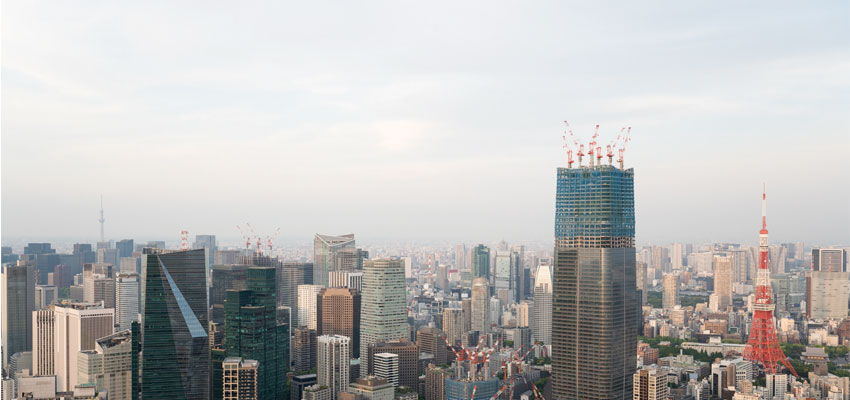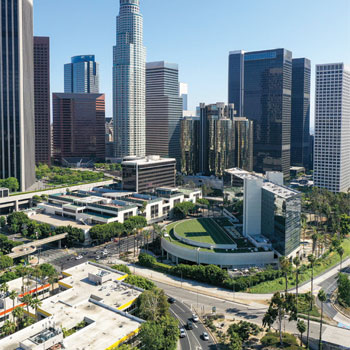Dream for a Developed India

"United Nation’s Human Development Index (HDI) ranks countries on three parameters: literacy rate, education access and healthcare. The countries are scored between 0 and 1 based on these three parameters. A country with an HDI index over 0.8 is generally considered developed. In 2024, 40 countries fit all three criteria, while an additional 20 countries fit two out of three. So, do we aim to be in those 40 countries in year 2047? Or, do we aim to be in top-60 countries? "
Late President Dr. A.P.J. Abdul Kalam, dreamed of a Developed India in 2015. In his book India 2020: A Vision for the New Millennium, he strongly advocated an action plan to develop India into a strong nation, rather a knowledge superpower and a developed nation by the year 2020. Maybe, it was not backed by the political will.
That dream was revived in 2022 under the ambitious Viksit Bharat@2047 plan. It is to match with the completion of 100 years of independent India.
While I have no doubts about the noble intentions, I see a complete absence of the discussion. Instead of sounding it just as a dream or more as an election promise, it needs to be seen as a commitment of the highest order made to every citizen of India. More importantly, it needs to spell out, what exactly is meant by a ‘Developed Nation’. Merely saying infrastructure development, social development, technological advancement, etc. will not help unless there are measurable parameters. Unfortunately, I didn’t find any document or announcement by Government of India giving the desired details or quantification of objectives.
Which criteria are to be used and which countries can be classified as being developed, are the subjects of debate. Different definitions of a Developed Country are provided by the International Monetary Fund and the World Bank.
In general, a developed country or an advanced country, is a sovereign state that has a high quality of life, developed economy and advanced technological infrastructure, relative to other less industrialised nations. Most commonly, the criteria for evaluating the degree of economic development are the gross domestic product (GDP), gross national product (GNP), the per capita income, levels of industrialisation, amount of widespread infrastructure and general standard of living.

The UN’s HDI takes into account, how income is turned into education and health opportunities and therefore into higher levels of human development. HDI ranks countries on three parameters: literacy rate, education access and healthcare. The countries are scored between 0 and 1 based on these three parameters. A country with an HDI index over 0.8 is generally considered developed.
In 2024, 40 countries fit all three criteria, while an additional 20 countries fit two out of three. So, do we aim to be in those 40 countries in year 2047? Or, do we aim to be in top-60 countries?
Now, let’s delve into the ground reality in India. While I can rattle some numbers-thanks to Google, Copilot or Gemini-like, how Indian economy is close to $4 trillion, forex reserves are $640 billion and market capitalisation is of $5 trillion (Jan 2025), what exactly does that mean to a common man, living in say, Patiala or Pune?
I agree, sound economy is ensuring employment of crores of Indians and thereby the primary needs, well conveyed through Roti, Kapada aur Makaan, are well taken care of, but what about his secondary needs?
Yes, there has been a massive push for infrastructure development all over India in terms of airports, ports, rail and road works. Lakhs of kilometres of highways are constructed, bringing cities closer than before. I can talk of Maharashtra; besides the Mumbai-Pune expressway, there is Samruddhi Mahamarg linking Nagpur and Mumbai, and many more.
But, once we exit the highway and enter inner roads of any city, we’re surprised by the ‘Unity in diversity’. Well, I’m talking of the roads full of potholes and congested traffic. From Solapur, one can reach Pune in three hours but, then it takes one hour or much more depending on the traffic congestion severity, to reach Hinjawadi from Hadapsar-both the suburbs of Pune. This situation, I call it ‘last mile problem’, seen across all Indian cities. The potholed roads become over-flowing rivers after just a few minutes of monsoon showers, putting vehicles and commuters in danger zone.
After struggling for an hour or more in traffic as a part of daily commute, when the hapless citizen finally reaches his home, more often than not, there would be electricity outage in his house. Even a few drizzles and the electricity plays hooky. Nevertheless, I must agree here that the urban citizen is much better off than his rural counterpart, in this regard, where electricity outage would be for hours.
Comes morning and he has to worry about the water shortage, even in monsoon, and so, call for a tanker for his apartment or society. Here again, Pune is much better than most of the Marathwada towns, which are perennially dependent on water tankers—tanker mafia. Incidentally, shortage of potable water is going to be a major issue all over India, unless it is tackled on war footing.
And, what about the rising threat of air pollution, right from Delhi, Kolkata, Kanpur, Mumbai, Bengaluru, Hyderabad to Pune and other towns all over India?
So, where is the ‘ease of living’? If at all someone is bothered about it-now I know the answer. Inner roads, electricity, water etc. such small things don’t come under Central Government or not even under State; they fall under the purview of local body or municipal corporation. Maybe true, but does this knowledge help minimise the hapless citizen’s daily woes? Where should the buck stop? Do citizens living in cities in developed countries face such issues? On this scale? Can we compare ‘ease of living index’ of our cities with them, and find out how much gap we have to bridge?
"India has just 33 years before its population ages at the same pace as advanced economies. With a low GDP per capita of just 18% of the World Bank’s high-income threshold, India needs to get rich before it gets old (As per McKinsey Global Institute)"
In short, there has to be some consensus, some report, rather a Whitepaper, outlining which parameters, which benchmarks, would be considered for a country to be termed as a developed one. It should show the values of those benchmarks as on date (As-is) and the target (Tobe), considering the year-over-year inflation till 2047. The proposed Whitepaper should outline specific benchmarks for development, assign accountability at every governance level, and include timelines for periodic reviews. Public consultations and expert panels can ensure its robustness and inclusivity.
This action plan has to have buy-in from the opposition or at least, invite them for nonpartisan discussion on this topic of national interest. There has to be consensus on at least few vital parameters that even in case BJP is not in power say in 2029 or 2034, the then ruling government would ensure implementation of the action plan for designated parameters to transform India into a developed nation. There could be one core committee with multiple sub-committees, depending on the grouping of benchmarks, parameters and criteria.
This action plan to make India a developed nation by 2047, has to be driven right from top to bottom, with feedback or output measurement, etc. from bottom to top. And, across all states and all towns or villages, agnostic of who is ruling it-may there be double engine or single engine government. Exemplary commitment ‘Nation first’ is needed to execute this action plan of Viksit Bharat.
A report by the McKinsey Global Institute adds even more urgency to the narrative. It warned that India has just 33 years before its population ages at the same pace as advanced economies. It means that with a low GDP per capita of just 18% of the World Bank’s highincome threshold, India needs to get rich before it gets old.
And again, this discussion here is only about the ‘what’ part of the developed country notion. The ‘how’ part is altogether a different topic. As a nation progresses from developing country to a developed country, the conducive economy or work or social environment should enable employment or business opportunities to bulk of the population thereby reducing the freebies doled out.
Can we expect a Whitepaper or at least a podcast on this topic dear to every Indian citizen, from the present government in near future? Else ‘Viksit Bharat’ would remain only as an ever-illusive dream, a mirage, a case of moving target, to year 2067? Or a typical ‘feelgood’ poll-promise never to be fulfilled. India’s demographic dividend is slipping through its fingers, and the country must act decisively and with sense of urgency.
Characteristics of developed countries:
- A high per capita income
- A diverse industrial mix, including a large services sector
- A developed financial system
- People having a longer life expectancy at birth
- A well-developed educational system